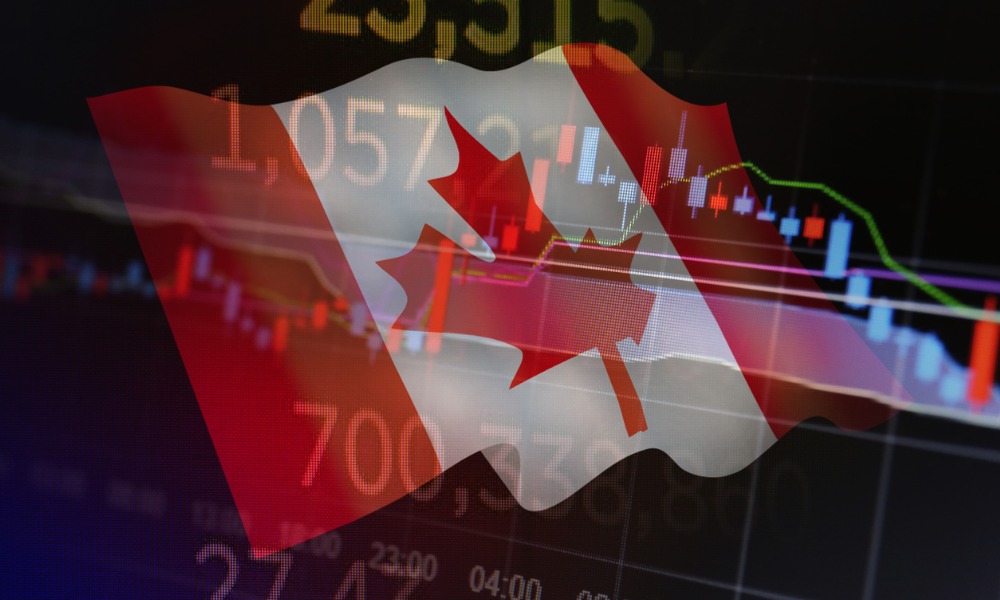As economic activity continues to contract, CI Global Asset Management’s Head of Fixed Income & Lead – Private Markets identifies clear opportunities amidst muted growth

This article was produced in partnership with CI Global Asset Management
The recovery experienced in 2023 came as a relief to investors after the tumultuous and complex year of 2022. Despite numerous indicators suggesting a recession in 2023, it failed to materialize. However, there's a prevailing sentiment that a recession is inevitable at some point. What did transpire in 2023 was an ongoing struggle, like a wrestling match, between persistent inflation and the implementation of rate hikes.
With regards to market sentiment in 2024, “It seems that the market is somewhat overzealous at the moment,” declares CI GAM’s SVP, Head of Fixed Income & Lead – Private Markets, Geof Marshall. In discussing the global market outlook, Marshall strikes a balance between realism and optimism. He doesn't foresee a catastrophic economic downturn but anticipates a period of low growth and manageable inflation. His forecast is a blend of caution and opportunity, reflecting the complex nature of today's economic environment.
He says, “Currently, the market expectations include around five interest rate cuts in Canada and six in the U.S. for the year 2024. This outlook could be due to two potential reasons: either inflation is decreasing faster than the market initially anticipated, or there's been a shift in economic growth from a low positive rate to a negative one.
“In my opinion, the latter scenario is more likely in Canada, as our economy is generally more sensitive to interest rate changes compared to the U.S. The U.S. economy, on the other hand, appears to be more dynamic. I believe however that the fixed income markets could offer decent returns in 2024.”
Investment strategies: Balancing risk and opportunity
Marshall goes on to highlight, “I believe that in the upcoming year, returns from fixed income investments will again surpass those from GICs. This outlook is based on the idea that channelling the cash currently held in GICs and high-interest savings accounts into the market will likely provide a stabilizing effect. Essentially, this influx of funds is expected to act as a support, or ‘floor,’ for the market in 2024.”
When identifying investment opportunities, Marshall's team relies on diligent fundamental analysis and relative value screening. They assess companies' viability, competitive advantages, and management strength. He emphasized the importance of understanding risks at multiple levels - from interest rates to credit risks - to make informed investment decisions.
The CI GAM SVP emphasized the importance of a collaborative approach in managing the fixed income team. He described their strategy as a blend of top-down and bottom-up approaches, focusing on government bonds, economic trends, and rigorous research. They prioritize investing in strong companies, especially post-event investment-grade bonds, and maintain a high-quality, high-yield focus without overreaching for yields.
“The most significant factor we control in some of our portfolios is the level of interest rate risk, or duration, that we choose to take,” Marshall says, “Last year, we navigated this aspect quite effectively. We began the year with a short duration strategy and an underweight position in government bonds, which minimized the impact of rising interest rates on our portfolios.
“However, over the course of the year, we increased both the duration and our allocation to government bonds. This change was based on our assessment that the likelihood of the Bank of Canada and the Federal Reserve ending their rate-hiking cycles was increasing.
“Now, as we enter 2024, with both central banks likely to pivot towards rate cuts, our strategy is to be ‘long duration,’ meaning we're accepting more interest rate risk than the market average and increasing our exposure to government bonds.”
Trends and developments in fixed income
Marshall observed a significant shift in 2023, marked by a minor banking crisis in the U.S. that didn't lead to a significant repricing of credit risk. He predicts the continuation of this trend in 2024, with private credit markets playing a crucial role in absorbing risks traditionally held by regional banks. This shift could alter the landscape of credit risk and defaults.
With a quarter-century of experience in high-yield bonds, Marshall sees current high-yield credit as better quality than ever, citing the secured nature of debt and the underlying credit quality. He also notes the limited net supply in the market, which supports valuations.
He says, “I believe that in 2024, this trend will persist, and we'll see the riskier segments of the credit market increasingly moving away from the high bond market and towards the private credit market. This shift reflects investor sentiment that anticipates an economic slowdown, or even a recession, in 2024.
“Personally, I think Canada is already in the early stages of what will be a shallow recession, although it will likely take another two quarters before this is officially recognized. But I think we've got an environment where we can get good to very good returns in 2024.”


